Legend has it that Saint Patrick gave a four-leaf clover to a group of his followers; the fourth leaf put there by God to bring luck. St. Patrick believed the first three leaves represented hope, faith, and love. While the actual probability of finding a four-leaf clover is unclear, at best, it may be 1 in 5000. Although since the gene for the fourth leaf is inheritable, if you find one, another may be close.
A four-leaf clover represents just one kind of rareness. One might find a 4-leaf clover just about anywhere. Four-leaf clovers are not just restricted to Ireland. Four-leaf clovers are rare because at any given locality they occur in very minuscule numbers.
The idea of whether rareness imparts values has tormented philosophers, including Nietzsche. “Whatever can be common always has little value. In the end it must be as it is and always has been: great things remain for the great, abysses for the profound, nuances and shudders for the refined, and, in brief, all that is rare for the rare.” But of course, Nietzsche does not define rare. What does “all that is rare for the rare even mean?” Freakin’ Nietzsche.
We all feel we know what rare means. But contrast the case of four-leaf clovers with platinum. Platinum is special for me. For my 10th wedding anniversary, I had a custom wedding ring made of platinum for my wife. This platinum band was to replace one from our youth when I had more limited income and could afford a metal less “precious” and less “rare.” Yet, platinum represents another kind rarity, occurring in great abundance but only at a few locations. Locally abundant but geographically restricted.
In a classic 1981 paper, Dr. Deborah Rabinowitz, a professor at the University of Michigan, laid out the seven forms of rarity. What makes something rare depends on three characteristics; geographic range, habitat specificity, and local population size. First, is a species found globally or only at a single location? Two, is species seen at any given site in low numbers? Third, is the species only found in a specific type of habitat?
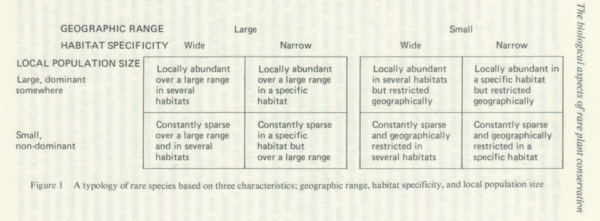
As Rabinowitz notes in elegant writing., “If each of these attributes is dichotomized, a 2 x 2 x 2 or eight-celled block emerges. Although creating the hazard of false reification – that is, converting an idea into an object – such a simple scheme can aid in focusing our thoughts, and this is my intention. The patina – a gloss or incrustation conferred by age – of monolithic rarity may have hindered our understanding of an exceedingly heterogeneous assemblage of organisms. Since the products of rarity are diverse, the causes of rarity and the genetic and population consequences of rarity are undoubtedly equally multiple.”
But obviously, 2x2x2 does not equal 7. One state is lost, a species found everywhere, in high numbers, and several different kinds of habitats. This species isn’t rare at all! You can think of the seven forms of rarity as three singe type cases (geographically limited/small numbers/habitat specialist), the three double type cases (geographically limited and small numbers/geographically limited and habitat specialist/small numbers and habitat specialist), and the last triple case (geographically limited and small numbers and habitat specialist).
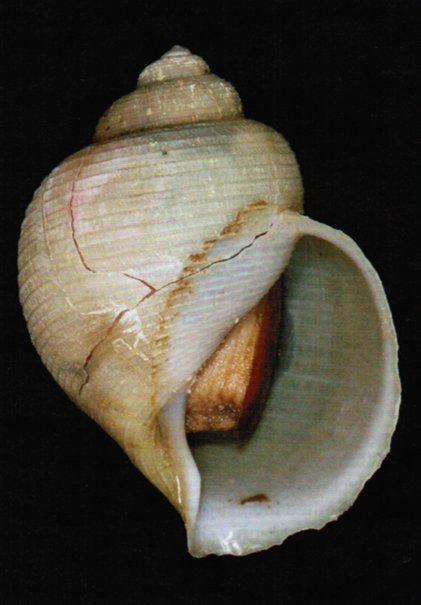
The most uncommon form of rarity is a species found all over but in limited numbers at a single location. One such species is the exceptionally beautiful deep-sea snail Oocorys sulcata found in the eastern and western corridors fo the Atlantic and reaching will into the Indian Ocean and the western Pacific. Oocorys sulcata also show incredible depth tolerance found all the way from the shelf at 150 meters down to the deepest abyss over 5000 meters. Yet, despite this fantastic distribution, it is rarely found. A famous sampling effort off of New England did not capture a single individual in 41 samples. Another 24 samples later as part of later effort only yielded a single specimen. Indeed, based on some very rough calculations, you would probably only find about 15 every square kilometer or roughly 45 Manhattan city blocks.
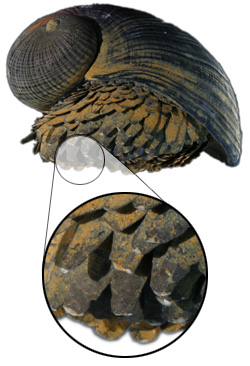
Hydrothermal vents possess mollusks that are both unique and fascinating. A snail first described in 2003, the unusual snail Chrysomallon squamiferum, maybe the most exciting find thus far at a hydrothermal vent. I admit my bias here, as most of my interest lies with studying deep-sea snails. Nonetheless, the discovery of “gold-footed” snails a the Kairei vent field in the Indian Ocean is fascinating.
At this point, I should state that the foot of the snail is mineralized with pyrite and greigite. Many of you might note the misnomer here, as pyrite is only ‘Fool’s Gold,’ but in deciding on a temporary ordinary name Fool’s Gold-Footed Snail seemed a bit lengthy. I hope all will forgive the intentional misnomer for the sake of creative writing. Although other names due include the big-hearted iron snail (it also possesses an abnormally large heart for its size). And of course the scaly foot snail. So maybe the big-hearted, iron gold, scaly foot snail.

The scales, or sclerites, that cover the entire length of the snail’s foot can be up to 8mm long. The presence of mineralized scales is remarkable in itself, but the existence of iron sulfide as skeletal material is unknown from any other animal. The purity of sulfides, among other lines of evidence, suggest that the building of the scales is controlled by the gastropod itself. The sclerites are thought to have evolved recently and homologous to the operculum. It is believed they may serve as a defense against cone shells also occurring at the vent.
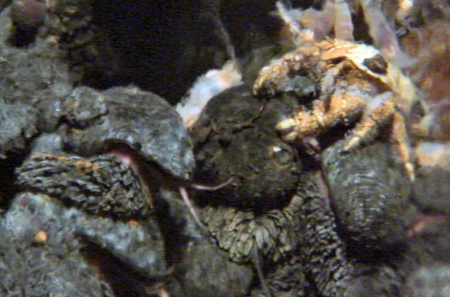
Chrysomallon squamiferum is rare, not only for the oddity of its features amongst the animal kingdom but because the snail is known from only three hydrothermal vents in the Indian Ocean. While abundant at any of these vents it is geographically restricted, like platinum. The scaly foot is actually a “double rare” case both geographically restricted and a habitat specialist. Given this potential habitat of only a few square meters, some of which endangered by deep mining interests, led a new paper by Dr. Sigwart and colleagues establishing Chrysomallon squamiferum as endangered on the IUCN RedList. This listing places the big-hearted, iron gold, scaly foot snail with 25 species all either bony fish, cartilaginous fish, or cephalopods all assessed to be either endangered or critically endangered.
Helen Macdonald writes in H is for Hawk “The rarer they get, the fewer meanings animals can have. Eventually rarity is all they are made of. The condor is an icon of extinction. There’s little else to it now but being the last of its kind. And in this lies the diminution of the world. How can you love something, how can you fight to protect it, if all it means is loss?”
I am hoping for future where Chrysomallon squamiferum I remember this elegant mollusk for the rarity of beauty, adaptation, and morphological marvel not the rarity of its existence.
Sigwart, J. D., Chen, C., Thomas, E. A., Allcock, A. L., Böhm, M., & Seddon, M. (2019). Red Listing can protect deep-sea biodiversity. Nature Ecology & Evolution, 1.
Rex, M.A., Stuart, C.T., Etter, R.J., & McClain, C.R. (2010). Biogeography of the deep-sea gastropod Oocorys sulcata Fischer 1884. Journal of Conchology, 40, 287.
Rabinowitz, Deborah. (1986). Seven forms of rarity and their frequency in the flora of the British Isles. Conservation Biology: The Science of Scarcity and Diversity
Rabinowitz, Deborah. (1981) Seven forms of rarity. Biological Aspects of Rare Plant Conservation

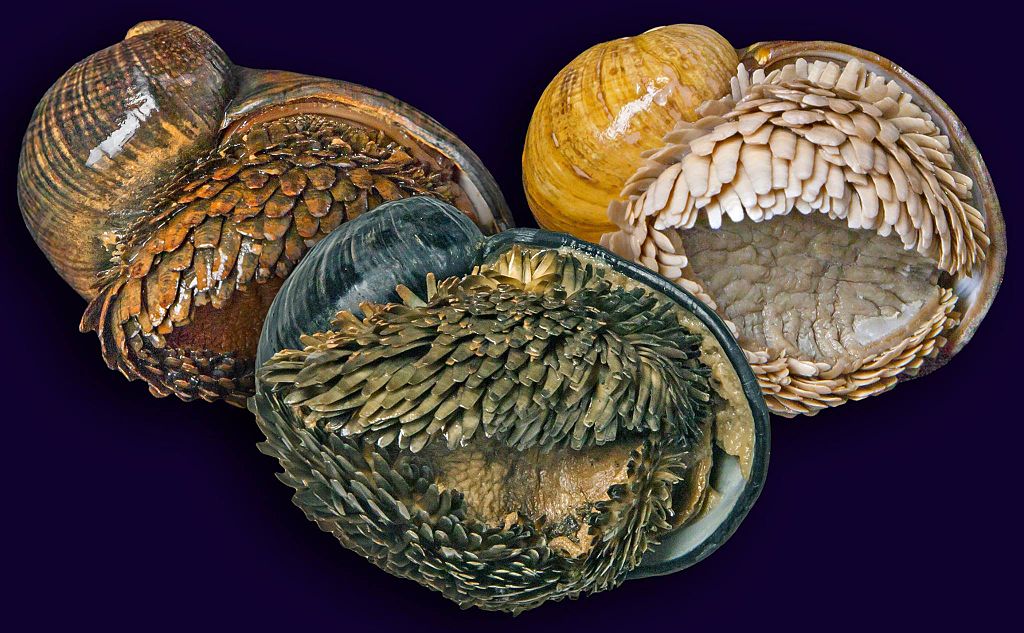
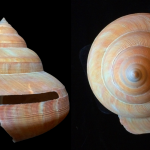
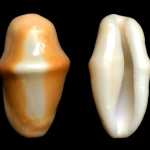
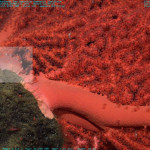
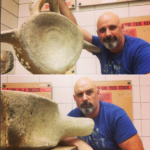
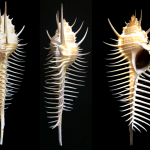
Beautiful piece Craig. I think sometimes about another kind of rarity, which is phylogenetic uniqueness. My beloved whale sharks are a good example. Not only are their populations declining (and none too big to start with), which is one sort of rareness, but they are the only member of their genus AND the only genus in their family, AND the only pelagic member of their order, and that is rare indeed. I feel the same about coelacanths and tuataras and all the other animal species that exist on their own little separate branches of the great Tree of Life, far removed from other dense clusters of twigs formed by more pedestrian radiations.
Rarity of any of these kinds is a type of beauty, and when a species combines many or even ALL of the classes of rarity, well those are real unicorns aren’t they?